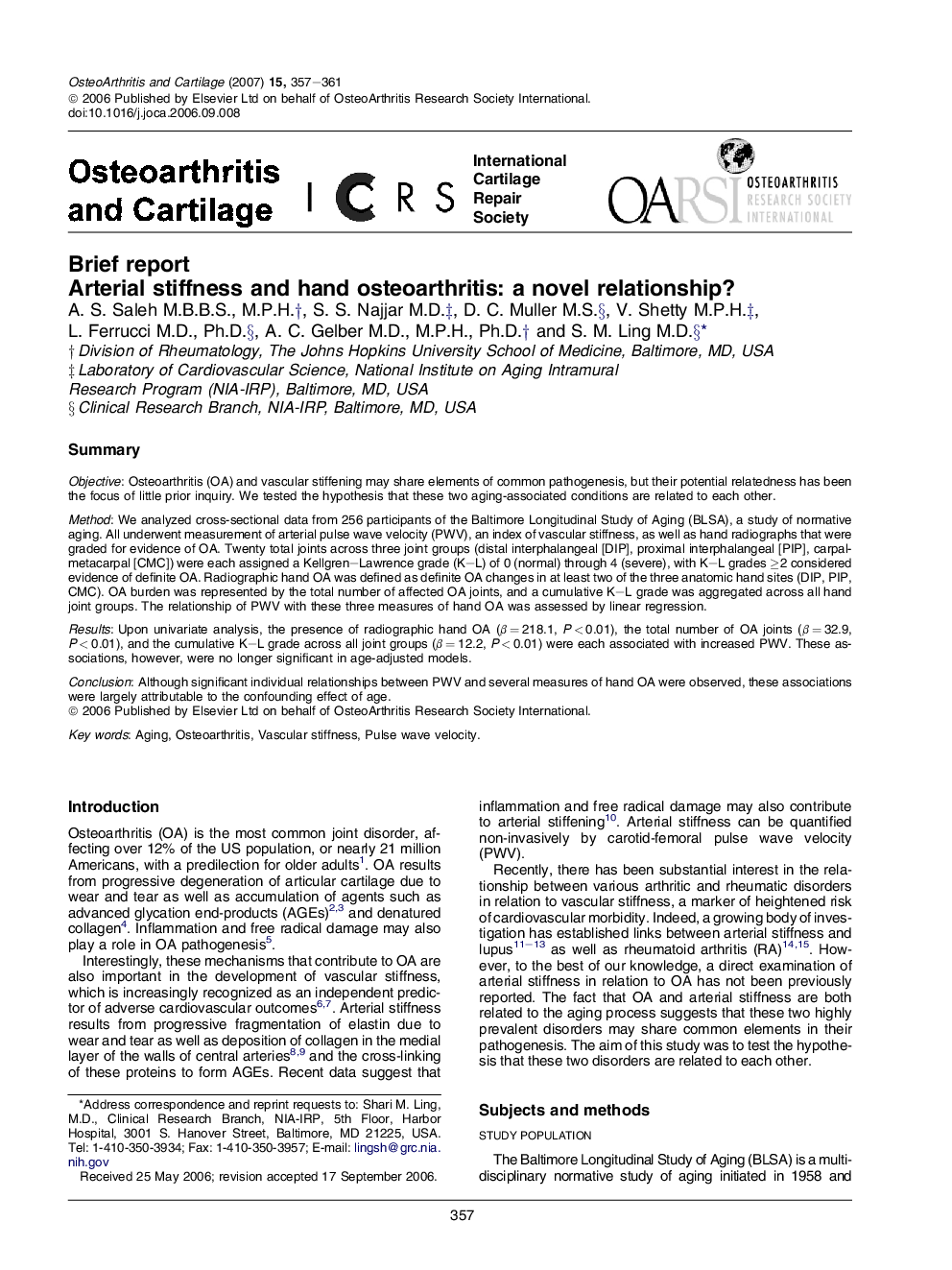| Article ID | Journal | Published Year | Pages | File Type |
|---|---|---|---|---|
| 3381817 | Osteoarthritis and Cartilage | 2007 | 5 Pages |
SummaryObjectiveOsteoarthritis (OA) and vascular stiffening may share elements of common pathogenesis, but their potential relatedness has been the focus of little prior inquiry. We tested the hypothesis that these two aging-associated conditions are related to each other.MethodWe analyzed cross-sectional data from 256 participants of the Baltimore Longitudinal Study of Aging (BLSA), a study of normative aging. All underwent measurement of arterial pulse wave velocity (PWV), an index of vascular stiffness, as well as hand radiographs that were graded for evidence of OA. Twenty total joints across three joint groups (distal interphalangeal [DIP], proximal interphalangeal [PIP], carpal-metacarpal [CMC]) were each assigned a Kellgren–Lawrence grade (K–L) of 0 (normal) through 4 (severe), with K–L grades ≥2 considered evidence of definite OA. Radiographic hand OA was defined as definite OA changes in at least two of the three anatomic hand sites (DIP, PIP, CMC). OA burden was represented by the total number of affected OA joints, and a cumulative K–L grade was aggregated across all hand joint groups. The relationship of PWV with these three measures of hand OA was assessed by linear regression.ResultsUpon univariate analysis, the presence of radiographic hand OA (β = 218.1, P < 0.01), the total number of OA joints (β = 32.9, P < 0.01), and the cumulative K–L grade across all joint groups (β = 12.2, P < 0.01) were each associated with increased PWV. These associations, however, were no longer significant in age-adjusted models.ConclusionAlthough significant individual relationships between PWV and several measures of hand OA were observed, these associations were largely attributable to the confounding effect of age.
